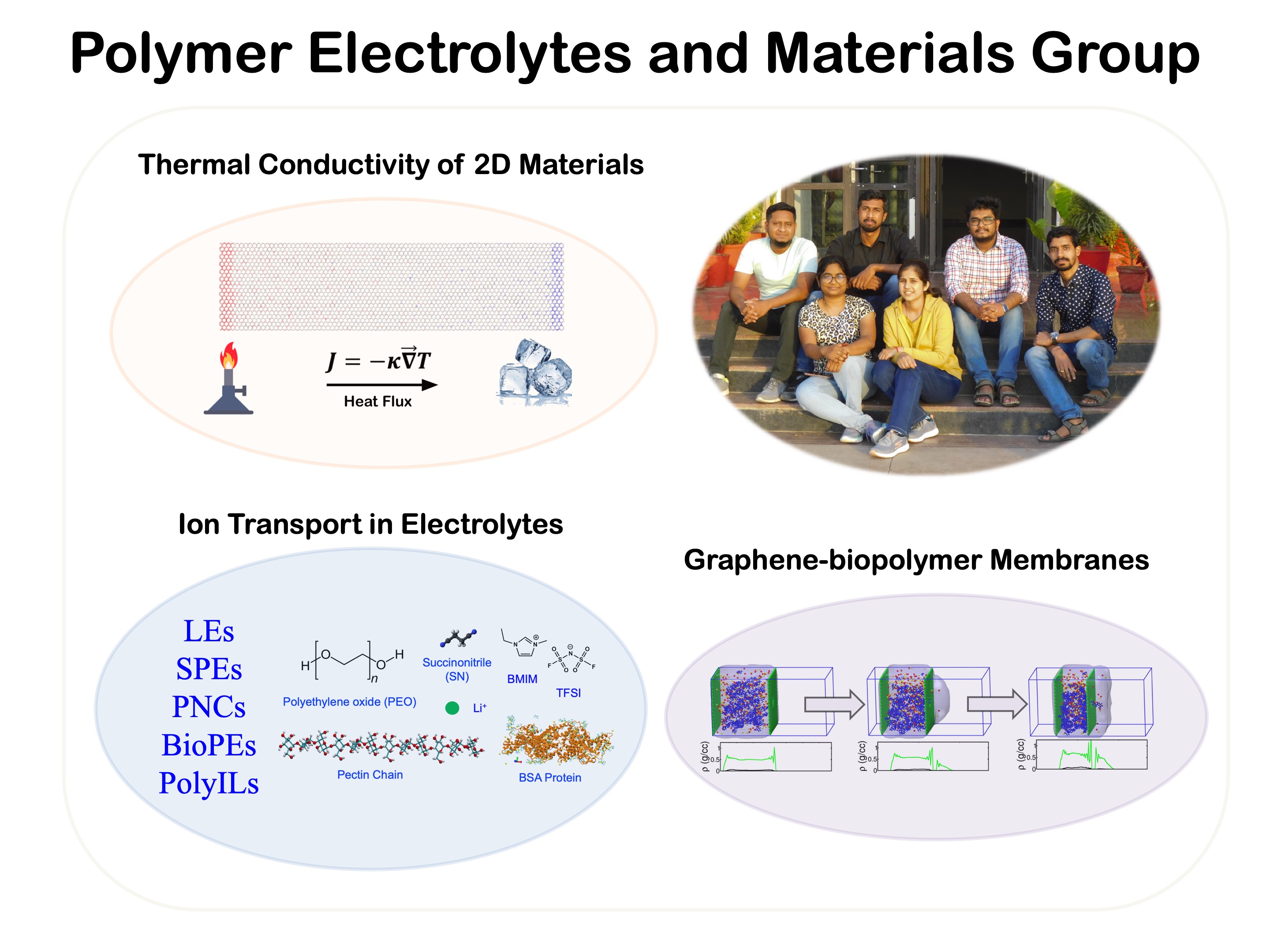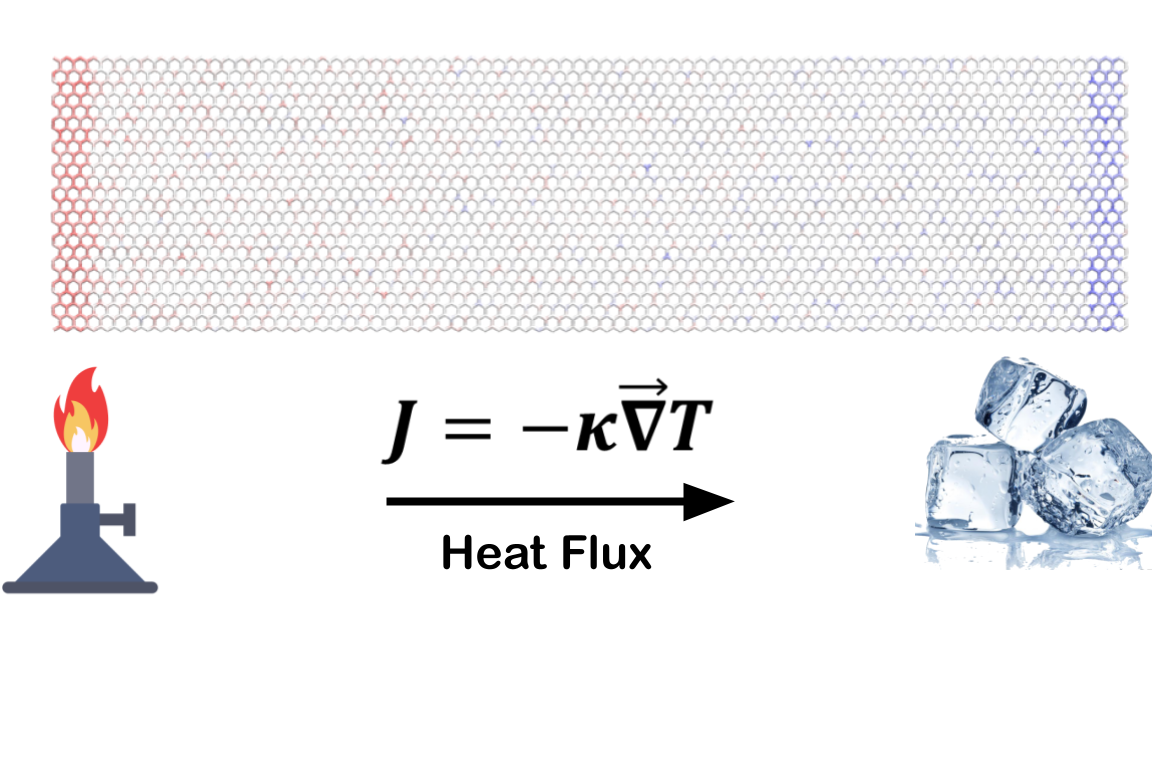
Research Highlights


Ion Transport in Biodegradable Polymer Electrolytes

The rechargeable lithium-ion batteries were first commercialized by Sony in 1991. Electrolytes are critical components for the battery's high-performance, longevity, and facilitate the ion transport between the electrodes. Solid polymer electrolytes (SPEs) are now the most promising candidates because of their superior properties, like the ease of processability and non-flammability. The semicrystalline nature of polymer leads to low ionic conductivity. So there are several efforts to improve ion conductivity, like ionic liquids added systems and polymerized ionic liquids as electrolytes. Ionic liquids (ILs) are molten salts, non-volatile, non-flammable, and generally possess high ionic conductivity. The polymerized ionic liquid is also a class of battery electrolytes that can combine unique characteristics like ionic conductivity in ILs and mechanical properties in polymer electrolytes. Currently, biocompatible polymer electrolytes are getting more attention as battery electrolytes for environmental concerns.
We are also working on biocompatible lithium-ion battery electrolytes. Lithium-ion batteries have many advantages like high energy density, lightweight, charging and discharging efficiency. The performance of the lithium-ion battery, like viscosity, mechanical properties, thermal stabilities, and environmental compatibility, depends on the electrolyte and electrode. We are focusing on the development of biocompatible lithium-ion battery electrolytes and investigating the ion transport mechanisms, mechanical properties and ionic conductivity using molecular dynamics (MD) simulations.
Group Members working in this area:
- Sipra Mohapatra
- Hema
- Sougata Halder
- Priyanka Kumari
Selected Publications:
-
Sipra Mohapatra, Shubham Sharma, Aman Sriperumbuduru, Srinivasa Rao Varanasi, and Santosh Mogurampelly, Effect of Succinonitrile on Ion Transport in PEO-based Lithium Ion Battery Electrolytes, J. Chem. Phys., 156, 214903 (2022). -
Santosh Mogurampelly, Jordan R Keith, and Venkat Ganesan,Mechanisms Underlying Ion Transport in Polymerized Ionic Liquids, J. Am. Chem. Soc., 139, 9511-9514 (2017). -
Bill K Wheatle, Jordan R Keith, Santosh Mogurampelly, Nathaniel A Lynd, and Venkat Ganesan, Influence of Dielectric Constant on Ionic Transport in Polyether-Based Electrolytes, ACS Macro Lett., 6, 1362-1367 (2017). -
Santosh Mogurampelly, and Venkat Ganesan, Ion Transport in Polymerized Ionic Liquid–Ionic Liquid Blends, Macromolecules, 51, 9471-9483 (2018).
Thermal Conductivity and Phonon Properties of 2D Materials

Understanding the thermal properties of two-dimensional (2D) materials has become one of the most promising research areas in condensed matter physics. The superior thermal conducting properties of 2D materials and their dependency on external strains and temperatures are not well understood and therefore demand a detailed investigation. Further, the thermal transport phenomena in 2D are exceptionally different from their counterpart bulk materials, and therefore, understanding the heat transport in such systems is central to their applications.
We are interested in studying the thermal conductivity of condensed matter systems to establish fundamental heat transport mechanisms, computationally design novel materials and propose experimental fabrication for different technological applications.
We are interested in studying the thermal conductivity of condensed matter systems to establish fundamental heat transport mechanisms, computationally design novel materials and propose experimental fabrication for different technological applications.
Group Members working in this area:
- Sapta Sindhu Paul Chowdhury
- Suleman Ansari
- Sourav Thapliyal
Selected Publications:
-
Himanshu Chakraborty, Santosh Mogurampellyand Vivek K Yadav, Umesh V Waghmare, and Michael L Klein, Phonons and thermal conducting properties of borocarbonitride (BCN) nanosheets, Nanoscale, 10, 22148-22154 (2018).
Ion Transport Through Graphene-based Membranes

We are investigating ion transport, structure, and dynamics of salt water through nanoporous graphene membrane using all-atom classical molecular dynamics (MD) simulations. Specifically, we are interested in the loading effect of biocompatible and non-hazardous biopolymer pectin on saltwater's ion transport, structure, and dynamics.Group Members working in this area:
- Suleman Ansari
- Souhitya Kundu
- Salman Haider
Selected Publications:
- Santosh Mogurampelly, Christopher M MacDermaid, Simona Percec, Michael L Klein and Giacomo Fiorin, Aggregation of poly(p-phenylene terephthalamide) chains: Emergence of fiber defects Phys. Rev. Mater., 3, 015602 (2019).
- Zhuolei Zhang, Santosh Mogurampelly, Simona Percec, Yong Hu, Giacomo Fiorin, Michael L Klein and Shenqiang Ren,Mechanically Strong Polymer Sheets from Aligned Ultrahigh-Molecular-Weight Polyethylene Nanocomposites J. Phys. Chem. Lett., 9, 2652-2658 (2018).
-